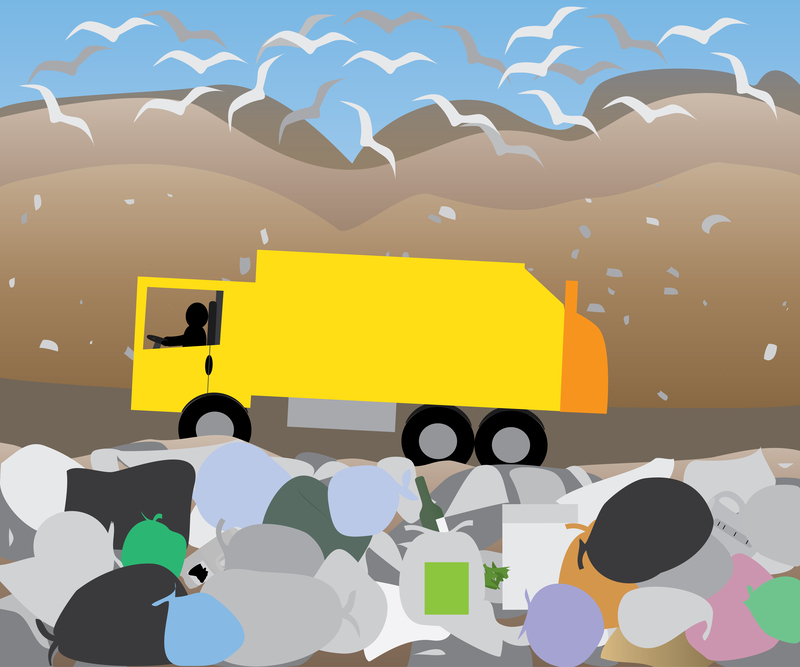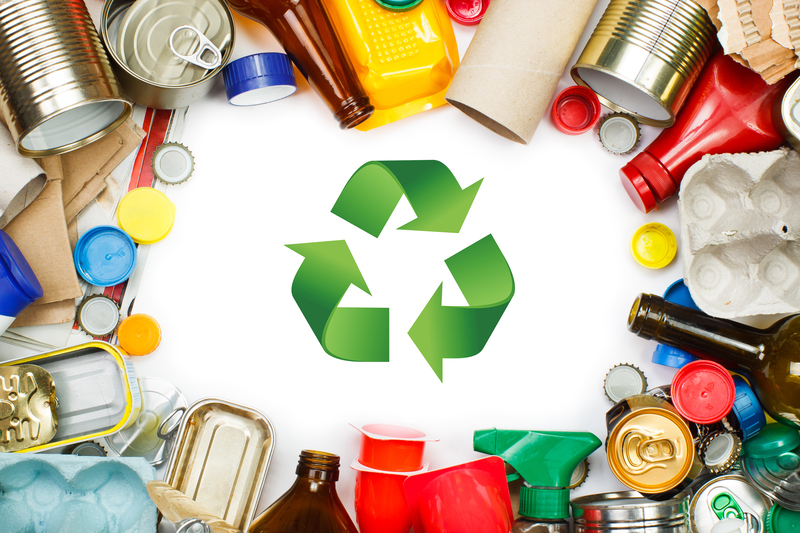How to Tell if Your Pots and Pans Are Recyclable
The kitchen is notorious for generating a range of waste, especially when it's time to replace worn-out cookware. But before discarding those old pots, pans, and cooking utensils, it's essential to consider whether you can recycle them. Understanding how to tell if your pots and pans are recyclable not only helps the environment but also ensures your old cookware doesn't end up unnecessarily in landfills.
In this guide, you'll discover everything you need to know about recycling pots and pans, from recognizing recyclable materials to finding local recycling options. Let's delve deeper into the world of eco-friendly cookware disposal.

Why Recycle Your Old Pots and Pans?
Each year, countless tons of cookware are thrown away, creating an enormous impact on the environment. Recycling your pots and pans helps to:
- Reduce landfill waste: Metal cookware can take hundreds of years to decompose in landfills.
- Conserve resources: Recycling metals uses less energy compared to mining new materials.
- Promote a circular economy: Recycled materials can be made into new products, saving resources and energy.
If you're passionate about living sustainably, knowing when and how to recycle cookware is crucial.
What Types of Cookware Can Be Recycled?
Not all cookware is created equal--different materials have different recycling protocols. Here's a breakdown of the most common types:
1. Stainless Steel Cookware
Stainless steel pots and pans are highly recyclable. Scrap metal recyclers accept them, but often require that you strip off non-metal components such as handles or lids.
2. Aluminum Pots and Pans
Just like beverage cans, aluminum cookware is in demand at recycling centers. However, any non-metal parts (like silicone or plastic handles) should be removed.
3. Cast Iron Cookware
Good news for cast iron lovers: cast iron skillets and pans are among the most recyclable kitchen items. Bring them to any scrap metal facility.
4. Copper Pots and Pans
Copper is a valuable recyclable metal, but make sure your copper cookware is pure. Some pans have copper bottoms but are lined with other materials--that may complicate recycling.
5. Nonstick and Teflon-Coated Pans
Here's where things get tricky. Nonstick and Teflon-coated pans are often not accepted at regular curbside recycling programs due to the chemical coating. Some specialty recyclers, however, may accept them if the Teflon is stripped off.
6. Ceramic and Glass Bakeware
Ceramic and glass cookware is generally not recyclable through standard glass or curbside programs because it melts at a different temperature from glass bottles and jars. Check with local specialty recycling centers.
How to Tell If Your Cookware Is Recyclable: Step-by-Step Guide
When in doubt, it's best to follow a process to determine if your old cookware can be recycled. Here's a step-by-step approach:
Step 1: Identify the Material
- Check the bottom of the pan for any labels, symbols, or manufacturer markings indicating the material type.
- Test with a magnet: If a magnet sticks, it's likely steel or iron; if it doesn't, it may be aluminum or copper.
- Look for coatings or non-metal pieces that could affect recyclability.
Step 2: Inspect for Non-Metal Components
- Remove plastic, glass, silicone, or wooden parts if possible, as recyclers often only accept pure metals.
- Separate lids (especially glass ones), as they may need a different recycling method.
Step 3: Investigate Coatings and Linings
- Nonstick coatings (like Teflon) generally render pans non-recyclable in standard metal streams. Check the pan's surface for coatings.
- Some coatings can be stripped by specialty recycling companies--contact local facilities to ask.
Step 4: Check with Local Recycling Programs
- Contact your curbside recycling provider or municipality. Most regular recycling programs do not accept cookware but may have drop-off events or metal recycling days.
- Look for local scrap yards or metal recycling centers. Many welcome old cookware if it's metal and free from coatings/other materials.
Step 5: Consider Donation or Reuse If Recycling Isn't Possible
- Donate usable pots and pans to shelters, thrift stores, or local community kitchens.
- Get creative--repurpose cookware as planters, storage containers, or even art projects.
Common Recycling Symbols and Labels on Cookware
Modern cookware manufacturers sometimes include recycling symbols or information labels. But what do these symbols mean, and how do you interpret them to know if your pots and pans are recyclable?
- Resin Identification Codes: Usually found on plastics, but some multi-part cookware with plastic handles or lids may show codes from 1-7.
- Metal Type Codes: Some pans label the metal type (e.g., "Stainless Steel 18/10," "Aluminum 3004"). Check recycling guidelines for your local area.
- Green Dot or Mobius Loop: Indicates that the product or its packaging is recyclable. Look for these symbols underneath the cookware or on packaging.
Where to Recycle Pots and Pans
Now that you know how to determine if a pan or pot is recyclable, let's look at the options available for actually recycling them.
Scrap Metal Yards
Most scrap metal recycling centers accept metal cookware--even those with minor damage or rust. Make sure to remove non-metal attachments. Many yards pay for metals by weight, so you might even earn a few dollars!
Special Municipal Collection Events
Some areas organize household metal collection days where you can bring items not accepted in regular curbside bins, including old cookware. Check your city or town's waste management website for dates and accepted items.
Retail Store Recycling Programs
Some retailers (such as certain home improvement or cookware stores) offer take-back or trade-in programs for old kitchen items. Call ahead to ask about cookware recycling policies.
Manufacturer Take-Back Programs
A few forward-thinking cookware companies offer recycling or exchange programs for worn-out products. Check the brand's website or reach out to customer service.
Donation Centers
If your pots and pans are still usable (no dangerous coatings flaking off, handles intact, etc.), consider donating them. Nonprofit thrift stores, community kitchens, or crisis centers often welcome kitchenware.
Curbside Recycling: What You Need to Know
Most curbside programs do not accept cookware because their sorting facilities aren't equipped to handle bulky or coated metals. However, exceptions do exist:
- Some towns offer "bulk trash" days for large kitchen items, which are then taken for metal recovery.
- Smaller metal items may be accepted if free from coatings and broken down into manageable pieces (check with your program).
It's best to check your city's recycling guidelines online or by calling their hotline before placing cookware in your curbside recycling bin.
Special Notes About Nonstick and Teflon-Coated Cookware
Nonstick pans present a challenge because of their chemical coatings. Here's what you should know:
- Most standard recycling and scrap yards do not accept Teflon-coated cookware.
- Do NOT put Teflon pans in your curbside recycling bin--they can contaminate the recycling stream.
- Check for specialty recyclers or stores with take-back programs specifically for nonstick cookware.
- If the coating is coming off, the pan may be considered household hazardous waste. Confirm with local regulations.
What About Ceramic, Glass, and Enamel Cookware?
Unlike metals, glass, enamel, and ceramic cookware is rarely accepted by curbside recycling programs. These materials:
- Melt at different temperatures and can cause issues during glass recycling
- Are often mixed with coatings or chemicals not suitable for standard glass recycling
Instead, look for local reuse options, specialty recycling programs, or consider creative repurposing.
Upcycling and Repurposing Old Cookware
Sometimes, when recycling isn't available, "upcycling" -- the art of giving new life to old objects -- is the best option. Here are creative ways to repurpose old pans and pots:
- Turn skillets into wall clocks or artwork
- Use deep pots as planters for herbs or flowers
- Convert saucepans into rustic storage containers for utensils
- Craft baking trays or pans into serving trays or message boards
Key Takeaways: How to Make Recycling Cookware Easier
- Identify your cookware's material--most metals can be recycled, but coatings and non-metal parts may pose challenges.
- Remove non-metal parts where possible.
- Check with your local recycling programs and scrap yards for specific guidance on recycling pots and pans in your area.
- Never put nonstick or Teflon-coated pans in curbside bins unless your city explicitly allows it.
- Consider donating or upcycling cookware that isn't suited for recycling.

Frequently Asked Questions About Recycling Pots and Pans
Can you recycle rusty pots and pans?
Yes! Most scrap metal recyclers accept rusty cookware. Just ensure you've removed plastic, wooden, or glass parts.
Can cookware with plastic handles be recycled?
Usually yes, but you'll help the process by removing handles or lids, as only the metal part is accepted at most facilities.
Are there eco-friendly alternatives to traditional disposal?
Absolutely! Donation, upcycling, and manufacturer take-back programs all provide greener options than tossing cookware in the trash.
Conclusion: A Greener Kitchen Starts With Smart Cookware Recycling
Learning how to tell if your pots and pans are recyclable is a vital step on the journey to a more eco-friendly home. By taking a few moments to identify the material, remove non-recyclable components, and choose the right recycling stream, you'll keep valuable resources in use and keep waste out of landfills.
Remember: Not all cookware is equally recyclable, and local options can vary widely. When in doubt, call your city or recycling center for specific guidance. And whenever possible, choose to reuse, repurpose, or donate pans and pots to maximize their lifecycle.
Your old cookware can play a new role in a greener, cleaner kitchen -- all it takes is a little know-how and a commitment to sustainability!